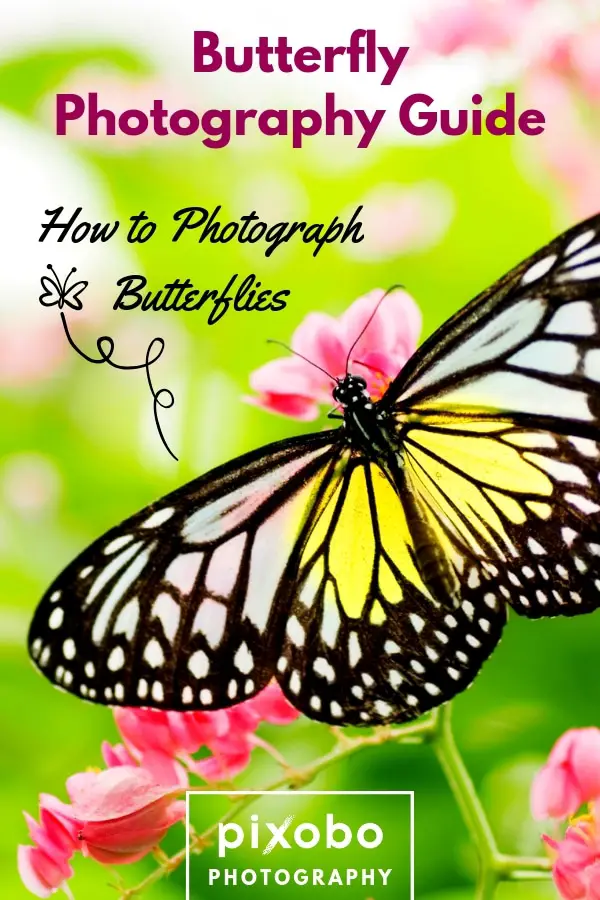If you are a nature fan and you like to spend your time outdoors, then you also probably enjoy watching butterflies. From fairy tales to nature, welcome guests everywhere, butterflies are really an amazing visual feast. Their beauty is portrayed through countless fairy tales and books for children. Almost every child dreamed at least once to have butterfly wings like the fairies do. Barbie, for example, has one of the most iconic butterfly wings that girls especially remember.
Table of Content
How To Photograph Butterflies – Let’s Get Started
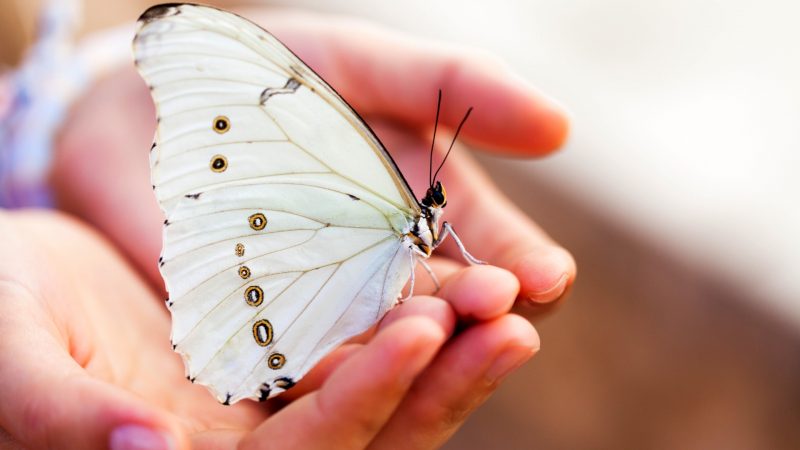
Butterflies are really something different. All of the colors that they hold, can at the time seem magical. If you are dedicated to nature photography, as many photographers at least try today, it would be a loss not to dedicate a few moments to them. If you already thought of that, then you must have asked yourself how do I photograph butterflies when they usually don’t tend to stay much in one place. I mean taking pictures of something so small and so fast, must require some special skills. Well, you are only partly correct, it definitely isn’t a simple task. But one thing that is certainly clear: Butterfly photography is a really rewarding experience once results are in. I mean let’s be honest here, the more difficult the task, the higher the “rush” once we get the results. With their colors, if taken the right way, butterfly photography can be extraordinary. This little creature is perfect for taking colorful photos, unlike most smaller animals (sorry ants!).
In spring, there can be so many opportunities but it is not always easy to choose the right moment
With the right equipment, you’ll easily get a good colorful image. These colorful creatures and the colorful flowers they feed on, are a perfect setup for great photography. They are just waiting for the right moment to take a good picture.
While some may see butterfly photography as an ideal subtopic of nature photography, many will find photographing butterflies to be quite challenging and requiring some unique skill set. These little winged creatures can be very unpredictable and most of the time they do not cooperate with a photographer. With the following butterfly photography tips and the right amount of patience, you’ll learn how to photograph butterflies and by the end of the process hopefully conclude that photographing butterflies is a very rewarding experience.
Location – Where to Find Butterflies?
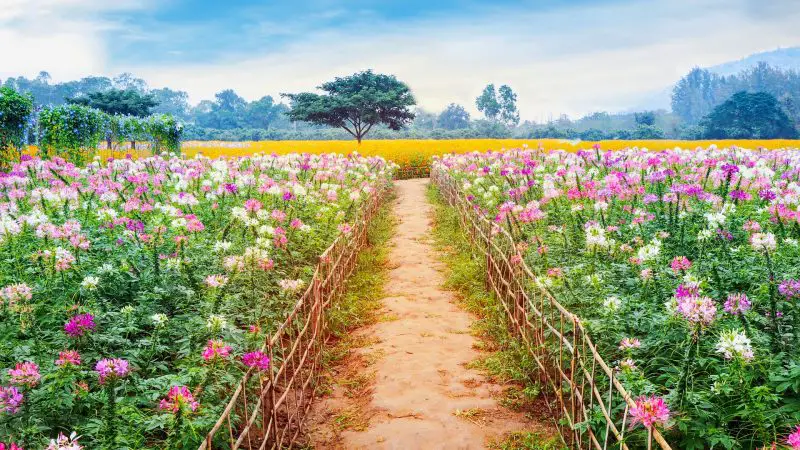
One inconvenient thing about butterflies is that not all species appear throughout the whole year. Mostly they are a spring/summer kind of insect. You will, however, be able to find them April through August. In that period butterflies can be found almost everywhere. They adapted and spread so much that they now live even in urban areas. You might get lucky and find them by simply walking around in your own garden.
You could get a step further and attract different kinds of butterflies by planting flowers and bushes that are known to attract them.
Certain butterflies can also be attracted by putting out rotting fruit. There are different approaches depending on the species that you are going for. Colorful plants and fruits left out in the air may be enough to attract at least a few of them.
Since butterflies like warmth, they can mostly be found during the sunny weather. This might be a challenge as the best time to take pictures is during the sunniest part of the day and for us, this is probably the worst time to be outside. I usually go out and try to find butterflies during the morning and evening hours. Butterflies are less active during these hours but since the light is better, your pictures will have more details and better quality. This is not a problem because butterfly photography is more about quality than quantity.
Sometimes all you need is one good picture.
In the past decades, the number of butterflies has decreased dramatically. This is due to the loss of their habitats and also plants that these species rely upon. Do not expect to find many perfect specimens but be happy if you find any butterflies at all. Finding rare and endangered butterflies is something that requires planning for since it requires driving to specific locations, where only a small population is left. Keep in mind that these populations are very vulnerable so don’t contribute to decreasing their number even further. When trying to take your picture you need to have some respect for nature and the environment they live in. This will assure that the people who also want to photograph butterflies in 10 years from, actually have some butterflies left to photograph.
Once you find a butterfly that you want to photograph, use a telephoto lens and take all the shots you can.
Must Have Equipment for Perfect Butterfly Photos
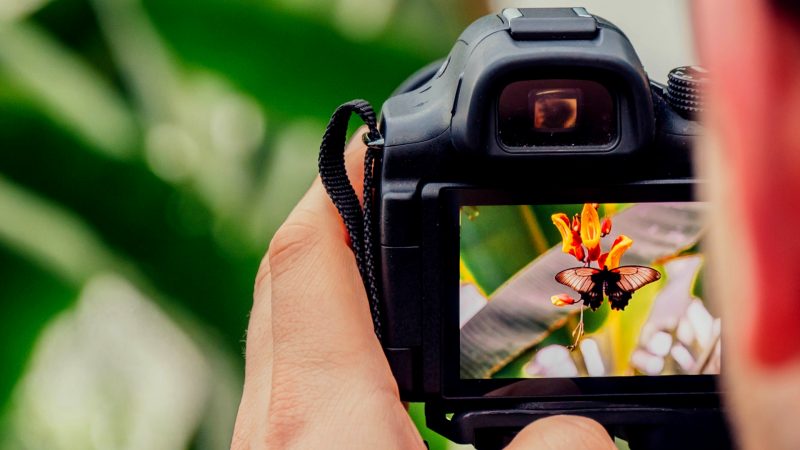
Butterfly photography requires some high-end equipment for the greatest results. Of course, you can also get great results with entry-level DSLR but usually, that will require more time, patience and eye for the perfect moment. (Click here and find out how to choose the best camera for your needs)
Starting off with the camera, my opinion is that at least budget DSLR or mirrorless camera is a must-have for butterfly photography. Anything better than can certainly only help. These cameras will allow you to upgrade them with any lens needed as you go on, but for now, any of them will work. Now that the camera is taken care of, let’s add a macro lens. If possible of course. If you don’t have a macro lens a normal telephoto zoom lens will work. Keep in mind that butterflies are small, fast and get scared easily. With a telephoto zoom lens, you can stand as far as you want without scaring them off, and still take a great picture.
Even if you don’t have the money for DSLR camera and a lens for it, a normal digital camera with a zoom lens can get you started. One of the first cameras I used was Nikon Coolpix camera with a zoom lens. These types of cameras are great for starters. They are worth the money. It is a digital camera and for beginners, any digital camera is perfect to get started.
Related: Is Canon Or Nikon Better For Beginners?
If you decided to go for a macro lens, I would recommend getting a 100 mm or more. This will give you a greater working distance. Of course, a camera needs to be stable so using a tripod will help. Working with a small aperture will also allow you to catch all shades and colors. For preventing a slow shutter speed, I would suggest going at the time of day when there is the most light. (Also, read what is the best time for outdoor photography)
Flash can help you use higher shutter speeds so take advantage of it, but only if you have high quality one. Don’t bother using built in flash as it is not nearly powerful enough to make a difference. It might only scare the butterflies away. If you have quality flash using it will help you get rid of all of the shadows you don’t want to have in your picture.
Extension tubes will also be of great help. This will make sure that you don’t need to come too close to the butterfly to take a picture. So, take advantage of those as well. Keep in mind that when taking pictures of butterflies the depth of field is very, very small. So, keep the aperture small as well to secure that the butterfly is going to stay in focus the whole time. And always pay attention to your background. This way you will avoid having a background that it filed and cluttered. To make sure that the background stays simple just move the tripod/camera around a little bit. The best impact that you are going to get out of the picture is by having the background as simple as possible so the subject is isolated.
When photoshooting these small animals I would suggest having the focus on manual just to be sure that the picture is focused right. Keeping the camera on an automatic focus, with these small subjects, it has a chance of getting something wrong. Since the camera is trying to find the best focus point, which might not be your butterfly. For minimizing the risk just keep it on manual focus.
Always plan ahead and keep an eye out on good compositions. Use the rule of thirds and always avoid placing the subject in the middle of the screen. This way the image itself will have a bigger impact on the viewers. Also, when taking a shot always check afterward how your picture looks like. If they are in need of improvement or if the composition needs to be worked on. This will help you to avoid the same mistake for the next 100 pictures in a row.
It’s All About the Right Plant

Depending on how skilled you are with plants, this will either be ago or no go. If you are skilled with plants, then try to grow your own flowers that will attract your butterfly friends. However, if you are one of those people that can’t take care of a plant, then why not buy some or even go out and just find them. A flower garden is perfect for this. Things like Lavender, Thyme or Primrose are really good for attracting butterflies.
Finding these types of plants out in the city is easy. Most parks will have at least one of these plans. Flower shops are also full of colorful flowers everywhere, so take that opportunity as well. Just while walking around and trying to find the perfect flower, be sure not to trespass. Stay aware of where you are standing and is it okay to actually be there without permission.
Nature reserves and butterfly houses are also a place to consider while searching for your subject. So, if you have any of them around in your area I would recommend checking it out. If not maybe plan a trip to go to some sort of nature reserve or even a butterfly house that is around your area. Make it a trip and have fun. Why not?
Butterfly Species Worth Taking Photos
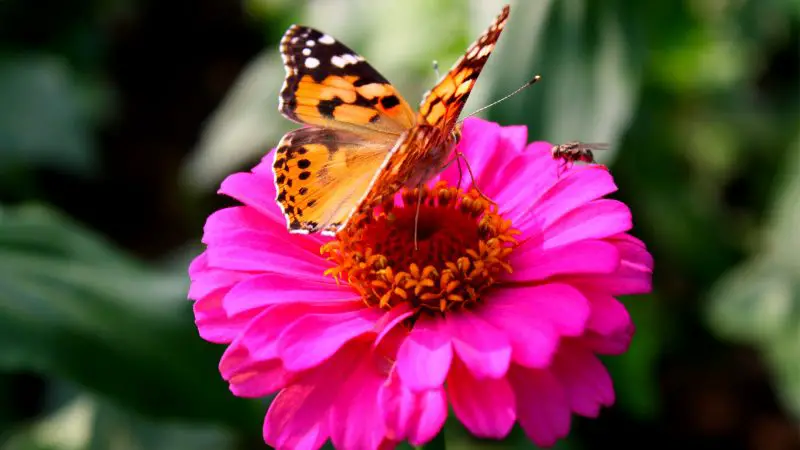
I need to stress this word while talking about butterflies. Since there are so many and not all are the same. When taking pictures of them, you need to know of what species you want to take pictures off. This will assure that you come prepared. Knowing the right species and what they like and don’t like will give you a bigger chance of actually seeing it and taking a picture of it.
This will also be helpful while naming your files, with this you can keep track of what you already have pictures of and what you still need to capture. So why not educate yourself before even starting a photoshoot. Go out and buy a guide that contains information about butterfly species, you can get lots of info about them using a guide. There are plenty of guides that can easily fit in your bag and travel with you. The internet is also a good way of educating yourself, but it is easier to have a book with pictures when faced with butterflies in nature. (Click here to learn all about different butterflies species)
Right Time of The Day to Shoot Butterflies
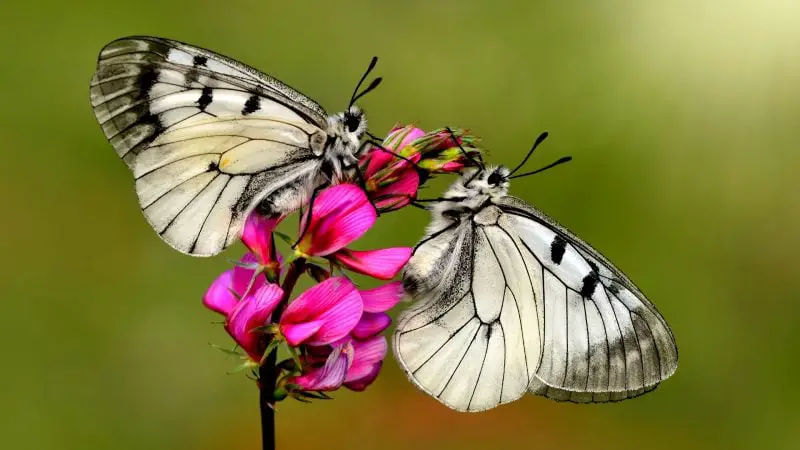
We talked about the right lighting that you need to have so that the colors of a butterfly would be displayed perfectly, you also need to keep in mind what time they are active. Like most insects, butterflies are cold-blooded animals. This means that they are going to be the most active during the afternoon when the sun shines the brightest. So, taking pictures of them at morning times or even at dawn will allow you to catch them easier.
The lighting during the morning sun and down is also perfect. It is soft and does not create sharp shadows on the subject you are a photoshoot. Also, during the mornings, when the temperature is colder, you can also find them sleeping. This makes taking pictures of them, way easier.
The Faster Shutter Speed You Can Use the Better
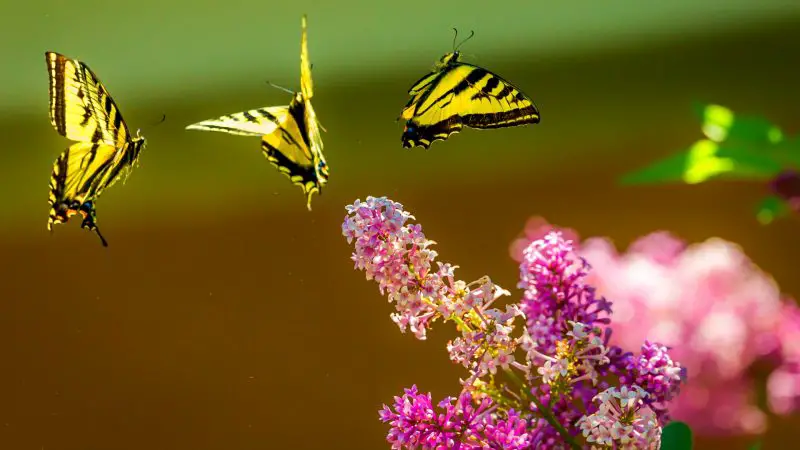
Since we are talking about insects, you need to keep in mind that they are moving all the time. Even when standing on flowers they still tend to move around and flutter their wings. In this situation, you need the fastest shutter speed that you can get to freeze the action. Besides having the fastest shutter speed, continuous shooting will also give you a better chance of getting a perfect image. The camera rapidly taking as many shots as you give the command will give you at least 3 shots that are really good. This is not a set rule, but you need to play around with it until you get it right.
Make Sure That Background Complements Butterfly Colors
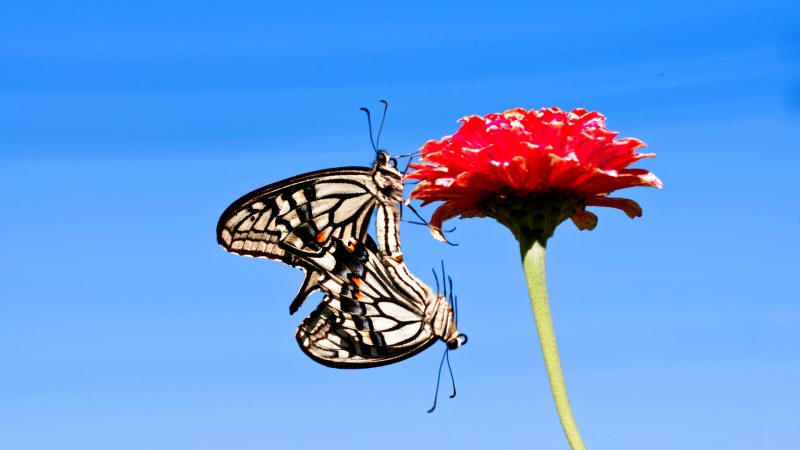
If you take a picture randomly, not checking the background, but only focusing on the subject of the picture, it can create problems. You can, in the end, get some pictures with a cluttered background. This you will want to avoid. So, when actually shooting the picture try to move all of the things that you can out of the background. Try to do it in a way of not scaring the butterfly away.
Don’t destroy anything and don’t rip anything out. If you have the chance of controlling the background, then just simply move things aside and put them back in place after you are done. We want to preserve nature as much as possible.
Wait! and Wait Some More
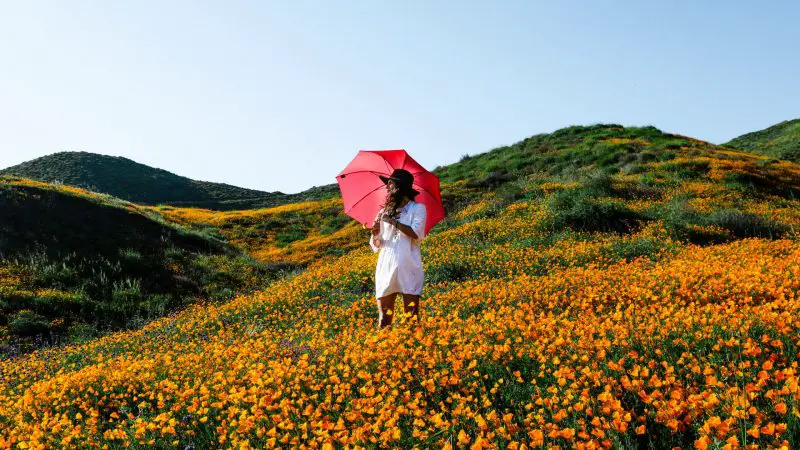
Waiting will be the key thing here. Especially if you have a flower set up at the right angle and everything. You don’t want to lose the angle so just keep the camera as it is and don’t move. Patience is the key here. The butterfly will come, but you need to wait for them and play by their rules and not the other way around. Always approach the subject slowly and don’t make any sudden moves in order to not to make it fly away.
Like I said, being patient is really going to be the only challenge in this business.
Lenses – Which Ones to Use?
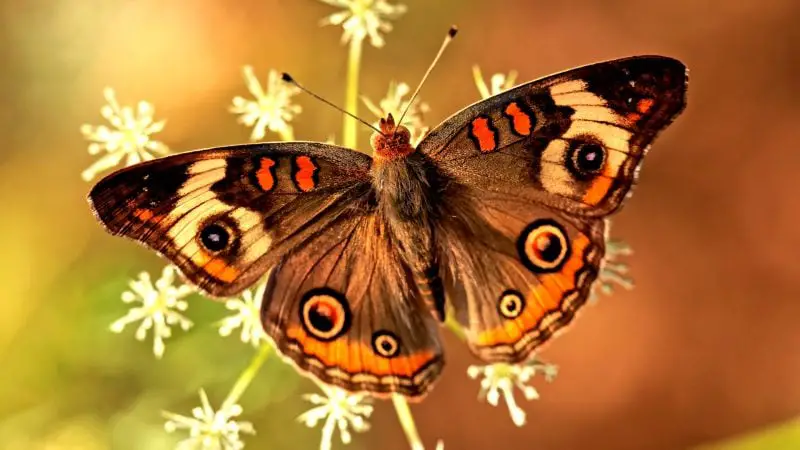
The macro lens is going to be your best friend for this adventure. Of course, if you have the money to afford it. If not any telephoto zoom lens will do the job. But if we are talking kit lenses then no. For this business, you need to buy a lens because of the size of the subject that you are capturing.
My recommendation would be anything that has a focal length of 100mm or even bigger. This is of course not a set rule and you can use whatever you have in store. Even if it is a 60mm, it could still work. But if you don’t want to scare them away by needing to come closer to the subject, try finding a bigger macro lens and a big telephoto lens.
Telephoto Lens – the Go to Lens for Butterflies
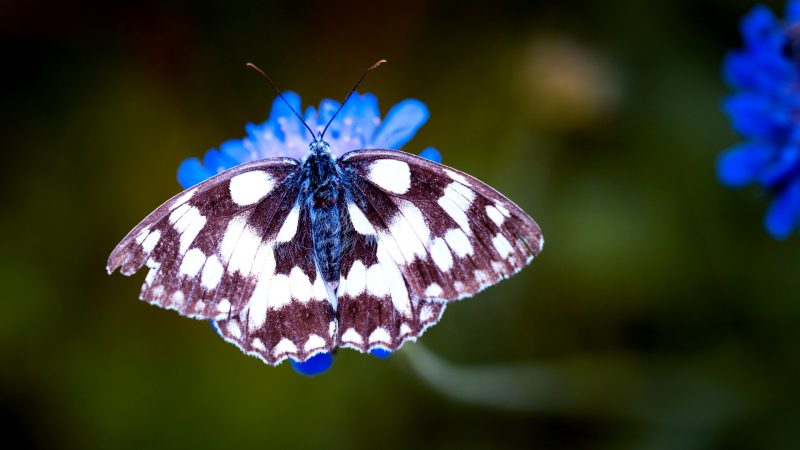
I always preferred working with telephoto lenses. The reason for this is that you can see the details far better with them. So, try getting a good telephoto lens. If you cannot find any that works for you and your budget, maybe then you can buy a digital camera with a zoom lens built in it. This will also give you a good picture.
Be Creative
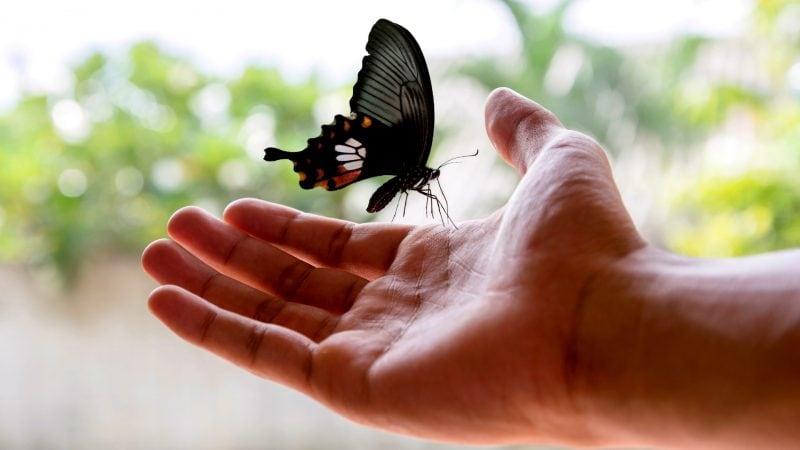
Be creative about the angles and places when taking the pictures. If you ever get a butterfly on your hand or head, try to capture it. Fruits are also a good way of showing the glory of a butterfly in the picture. You can take pictures of them sleeping, resting, standing on a flower or even in action.
Catching a butterfly in action is achieved by closely watching all the plants that they might land on and trying to take a picture while they are landing or even taking flight. Once you find some flowers that you might attract butterflies on, put the camera down and focus on it carefully. Colorful flowers and a continuous shooting mode will be your best friend.
You cannot predict what a butterfly will do next so having a continuous shooting mode will really help you out. This way you will catch the butterfly in full glory and action as it should be.
Photographing Butterflies in Flight
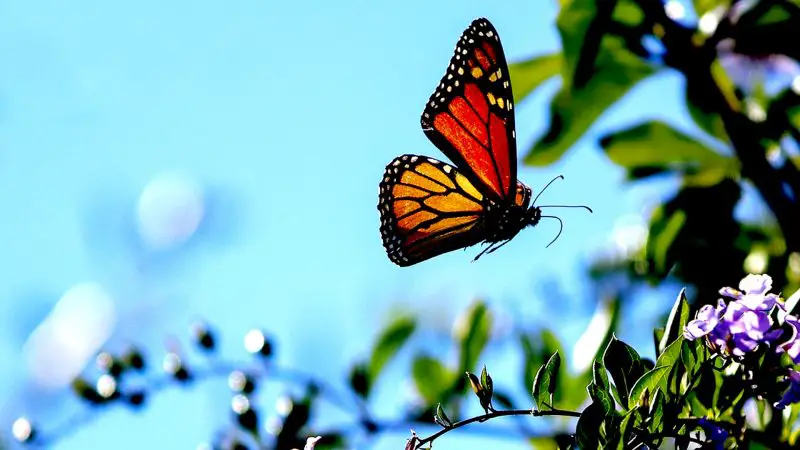
Like all other creatures with wings, butterflies are fluttering around all the time. It is impossible to predict where and when they will take flight but the best time to see them will always be when days are bright. Following the path of flowers will certainly help. Scout the area and be aware of your surroundings. Being aware of your surrounding will give you better chances to snap that perfect picture.
Shooting Butterflies Indoors?
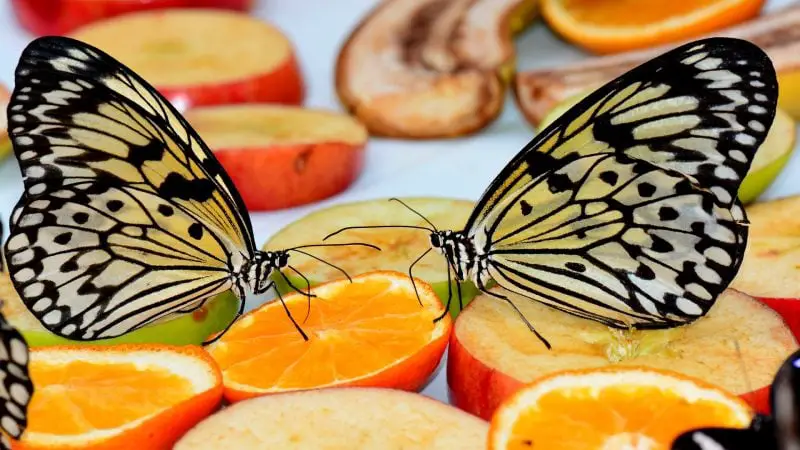
Occasionally if you get a chance to capture a butterfly, of course without killing it, then do it. Bring it temporarily indoors and take some pictures. Be fast and take care not to hurt butterfly while in your captivity. One approach you can try is to spill some water or leave some fruit on a table and leave a butterfly there. If you are lucky butterfly might be thirsty or hungry which will give you at least a few seconds for a shot. If you have to, hold a butterfly in a white box with holes on the cap to ensure it has enough fresh air. The lighting in this situation, after releasing it in the room, can be either a soft incandescent light or just the natural light from a window.
After releasing the butterfly, leave it alone. Let it calm down and settle in the new environment. Give it a few minutes to calm down and explore the environment before starting to take pictures. This way it may find a spot that it likes and will sit still there. This is the perfect opportunity to take a good picture.
Be Ready to Get Dirty
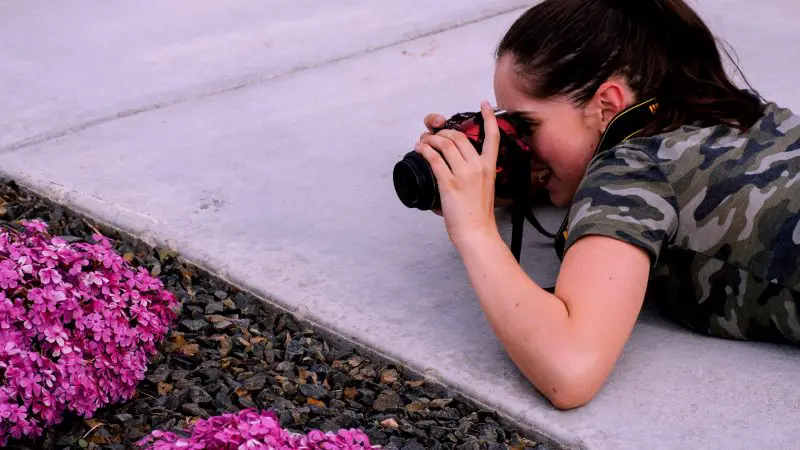
Sometimes butterflies end up going on the ground to get on fruit or to drink water. Be ready to get dirty and actually engage to be able to take that perfect photo. You may also be able to catch the eyes of a butterfly. It would be a great achievement and a really big factor in the whole picture. Since the eyes of insects are so complicated it will create a “wow” effect.
Off you go!
I hope that all of these tips and thoughts will guide you through your butterfly photography adventure. There are a lot of things to keep in mind while taking pictures of butterflies. Remembering all of them can be a challenge. So, take it easy on yourself. Go step by step and remember that practicing them will make you better over time. Patience is the key here.
Of course, having the quality gear can shorten the time needed to capture a great picture. Best gear on the market is not necessary. Honestly speaking, just having a digital camera with a zoom lens can be enough. Knowing your subject is also an important step in order to get the picture and composition right. A head-on shot will always give you a decent looking picture. Butterfly eyes will give the whole new dimension to that picture. It will give a dramatic and unusual look, so it is worth trying.
And for the end, you really need to be patient. This is necessary as butterfly photography is never easy or simple. It will bring better results not only in butterfly photography but any other photography and your life in general.
As always, have fun and be creative in making that perfect photograph of a butterfly!
